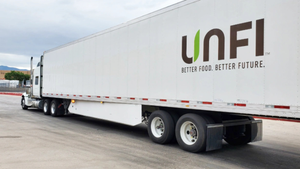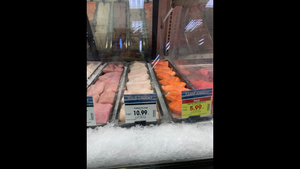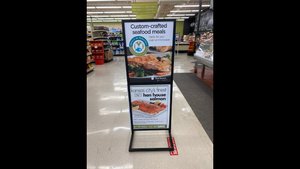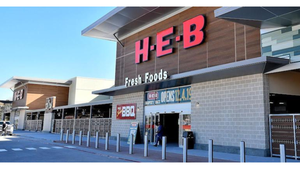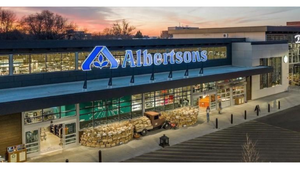Fresh & Easy Tries Propane
In its relatively short tenure in the Western U.S., Tesco’s Fresh & Easy Neighborhood Market has established a reputation for environmental awareness and energy efficiency in its 160 stores, which use about 30% less energy than a typical supermarket, according to Southern California Edison’s Savings by Design program.
April 18, 2011
MICHAEL GARRY
In its relatively short tenure in the Western U.S., Tesco’s Fresh & Easy Neighborhood Market has established a reputation for environmental awareness and energy efficiency in its 160 stores, which use about 30% less energy than a typical supermarket, according to Southern California Edison’s Savings by Design program.
On the refrigeration side, Steve Hagen, national director of procurement and engineering, Fresh & Easy, El Segundo, Calif., has pursued a green agenda, adopting case controllers — electronic devices attached to cold cases that manages everything from temperature, lighting and defrosting to electronic expansion valves, fans and anti-sweat heaters.
In a somewhat unorthodox move for a U.S. retailer, Hagen has since 2009 deployed self-contained coffin freezer cases (from AHT Cooling Systems, an Austrian company with US offices in Hanahan, S.C.) throughout the chain. Separated from the main refrigeration system, these horizontal plug-in cases function like home refrigerators, each employing only about nine ounces of refrigerant (R404A); they gain energy efficiencies by using sliding doors. Most Fresh & Easy stores have five of them. While US supermarkets frequently use self-contained cold cases as spot merchandisers, self-contained coffin cases are more unusual in the U.S. But when Fresh & Easy changed prototype in 2009, it was simpler and less expensive to retrofit stores with the self-contained coffin cases. “We use them for their flexibility and energy-efficient design,” said Hagen, adding that they use far less refrigerant than standard remote coffin cases.
Hagen is now planning an even more unusual move — a test of the same self-contained AHT coffin cases, but using just 4.5 ounces of propane gas as the refrigerant, in a store expected to open in June. Propane is reported to be more energy-efficient than refrigerants such as R-22, and has a global warming potential — the impact on global warming compared to carbon dioxide — of only three, compared with R404A’s GWP of 3,500. And propane is only $2 per pound, vs. $10 per pound for R404A.
Propane is also comparable in toxicity to refrigerants currently used in retail food refrigeration — it has a “Class A” (less toxic) designation under ASHRAE Standard 34-2010. “Industry standards exist to address the use of propane in stand-alone refrigerators or freezers,” said Margaret Sheppard, environmental scientist in the Significant New Alternatives Policy (SNAP) Program of the US Environmental Protection Agency’s Stratospheric Protection Division, Washington.
Though flammable, the total amount of propane used in five coffin cases — 22.5 ounces — represents no real danger in retail stores, Hagen said. It is far less than the amount in his patio barbecue grill, he noted, adding that stores like Wal-Mart and Target carry a few hundred 14 to 20-ounce canisters of propane in their camping sections. And in Europe and Australia, where self-contained propane cases are widely used in stores, safety has not been an issue.
However, because of its flammability, additional steps must be taken in design, labeling, testing, and training, compared to refrigerants currently used in retail food refrigeration, noted Sheppard. In addition, local governments, code-setting organizations, and fire marshals are not yet familiar with this kind of equipment, “so retailers may need to work especially closely with them until propane cases are more commonplace in the U.S.,” she added. And propane is not designed to be used in the quantities typically found in rack refrigeration systems. In addition to Fresh & Easy, Ben & Jerry’s/Unilever, and Nestle are also testing propane cases in the U.S. for retail food refrigeration, said Sheppard.
Last May, EPA proposed a rule to make propane acceptable under the SNAP program and a final rule, expected later this year, could increase the use of hydrocarbon appliances in the U.S., she noted. Given final EPA approval, Fresh & Easy could eventually use self-contained propane coffin cases in all new stores, Hagen said.
Underwriters Laboratories’ standard UL 471 — the UL Standard for Safety for Commercial Refrigerators and Freezers — sets 150 grams (5.29 ounces) as a maximum charge size for use of propane and other ASHRAE Class 3 refrigerants in commercial stand-alone refrigerators and freezers. EPA also proposed this charge size in its proposed SNAP rule.
Hagen observed that some small-format stores in Europe are using only propane-based self-contained cases, about 15 to 20 cases of various types. The total amount of propane comes to just four or five pounds, spread out across the cases. While such a small amount of refrigerant would be a significant environmental advantage, the self-contained cases are not necessarily as energy efficient as standard remotely supplied cases – something that would make Fresh & Easy hesitate to use propane cases exclusively at this point, Hagen said.
About the Author
You May Also Like


